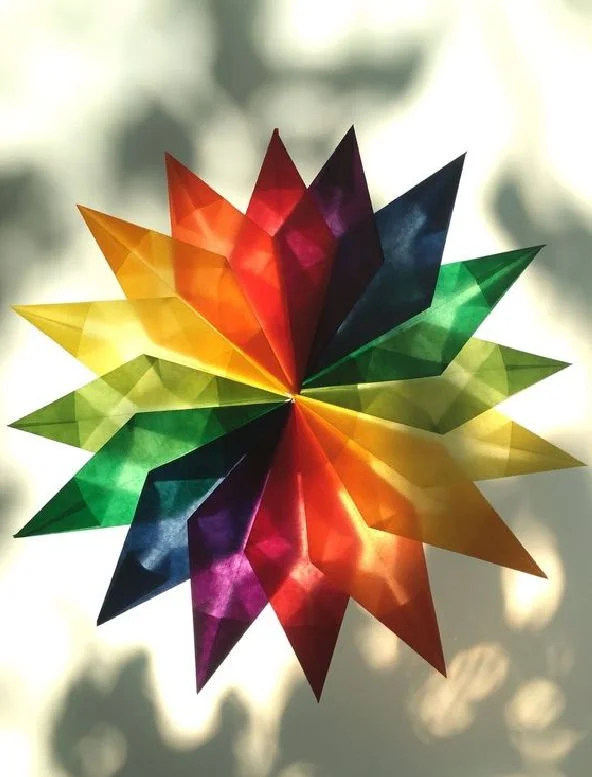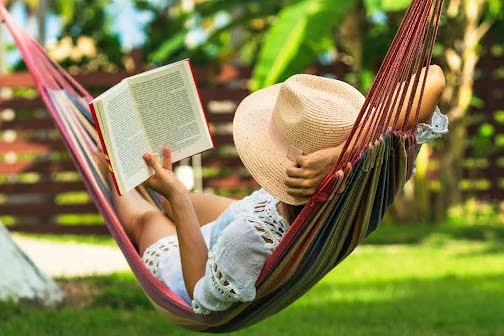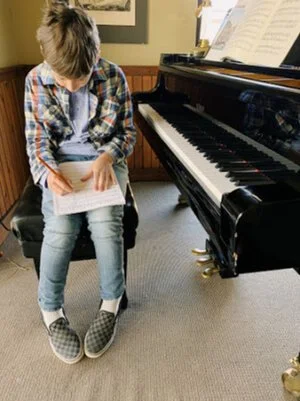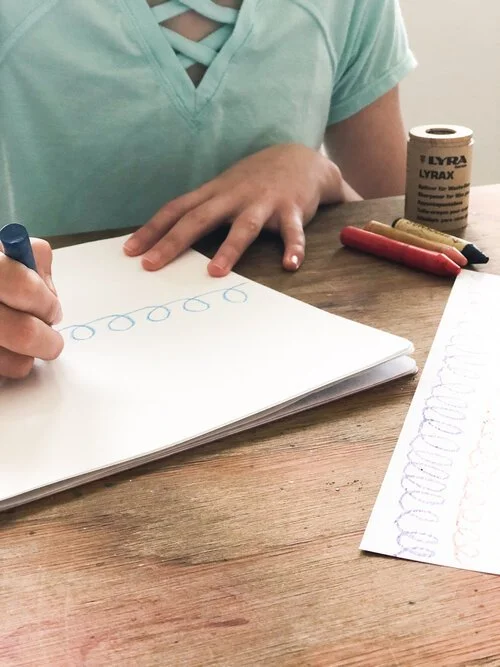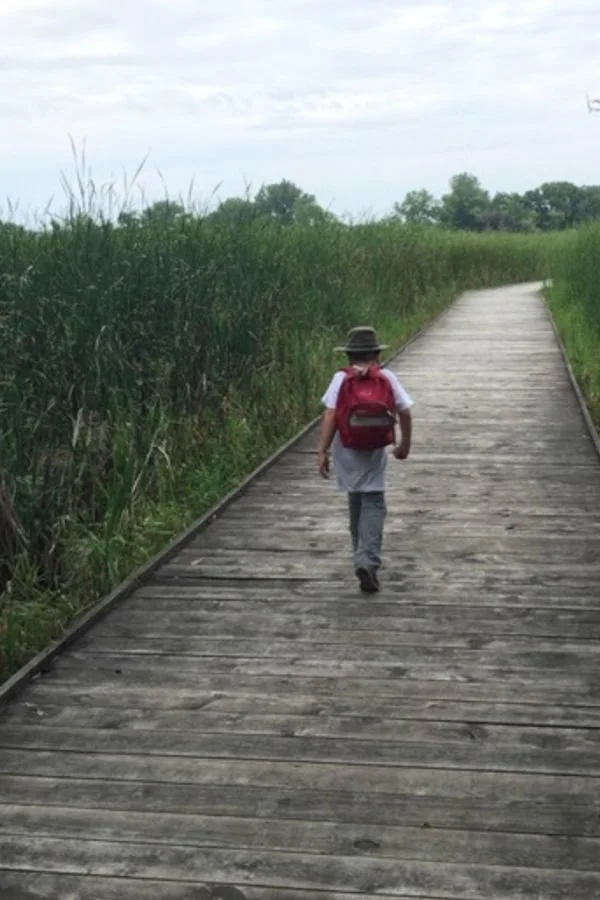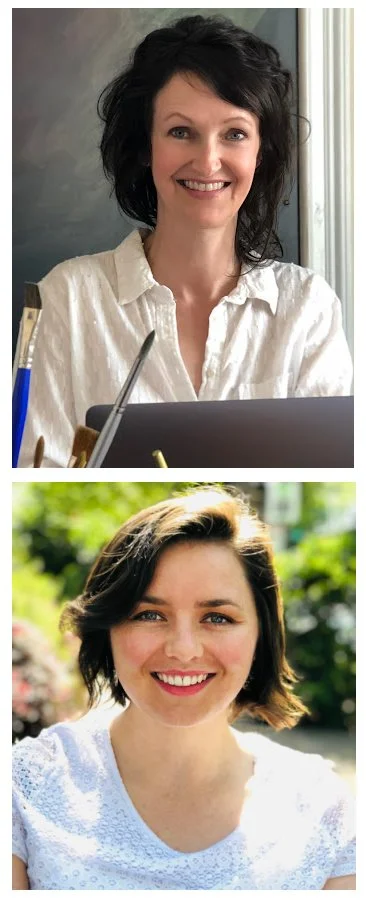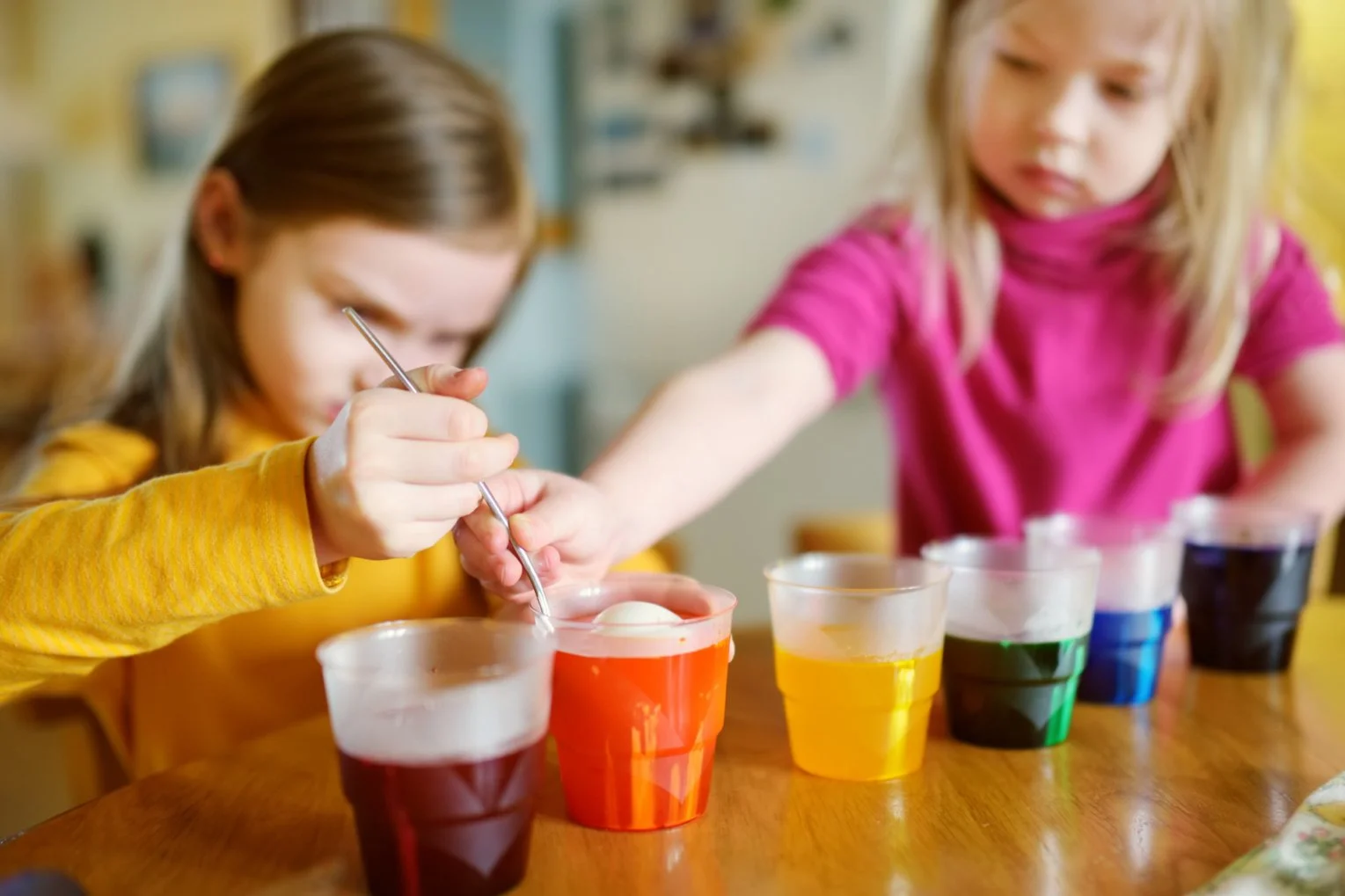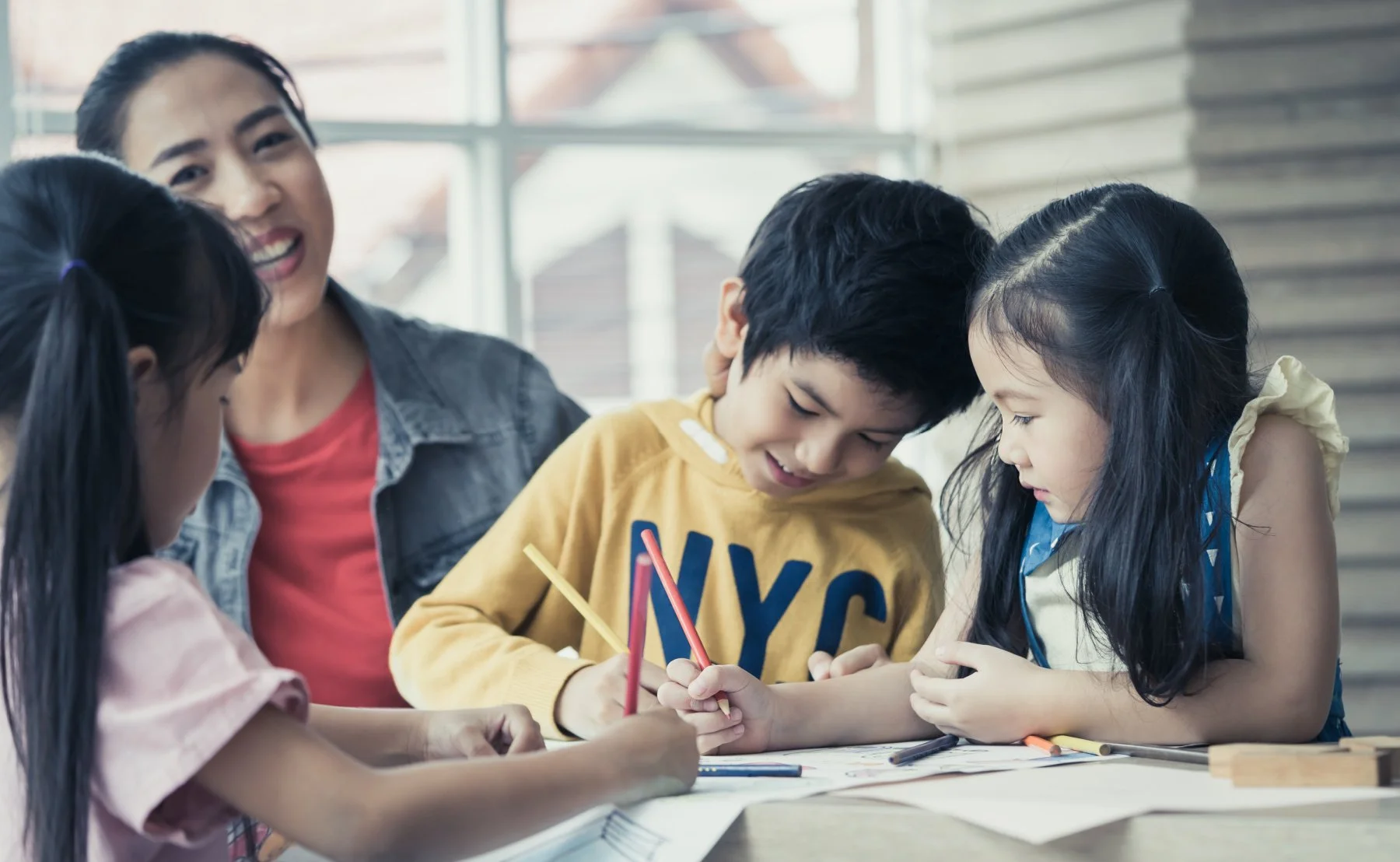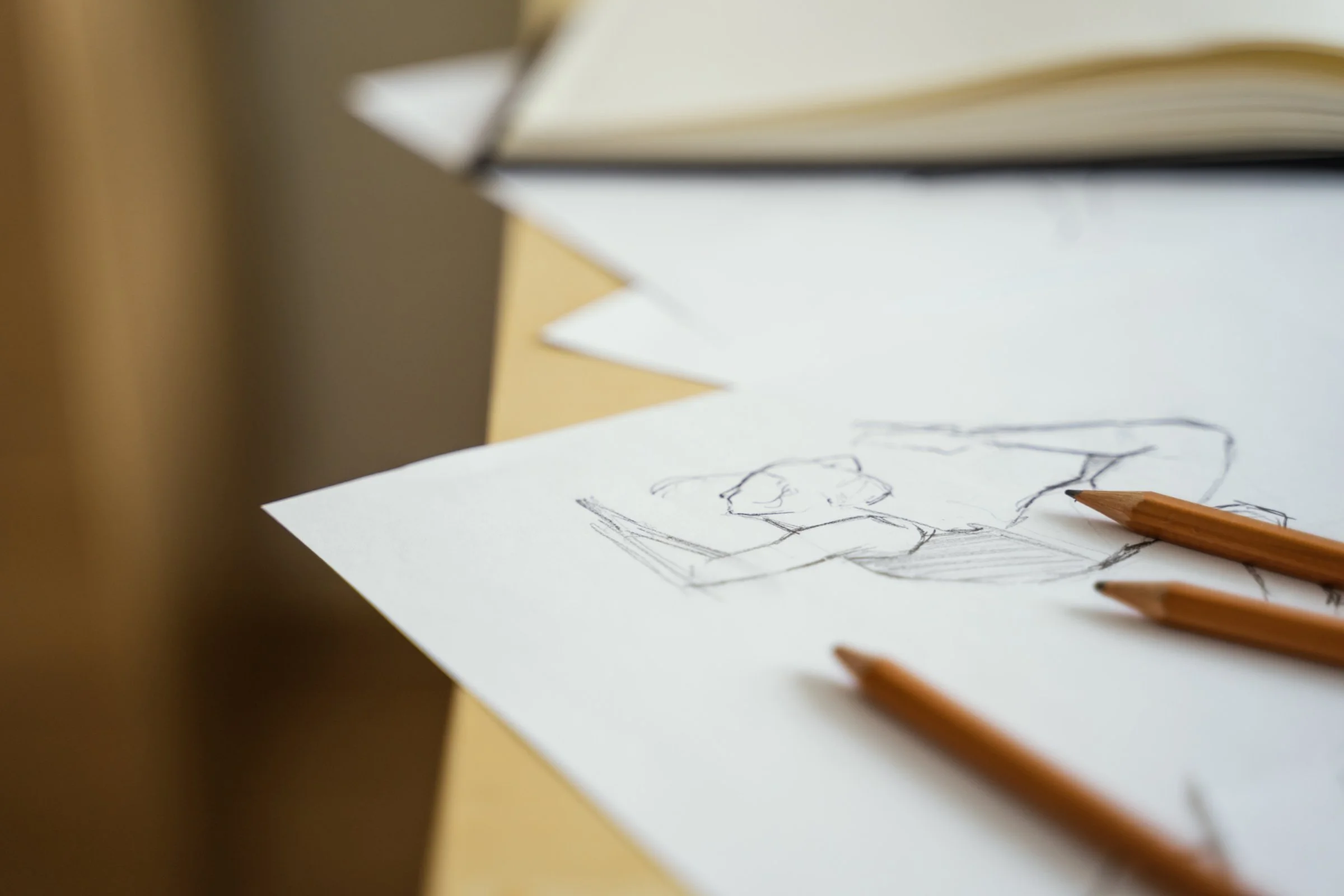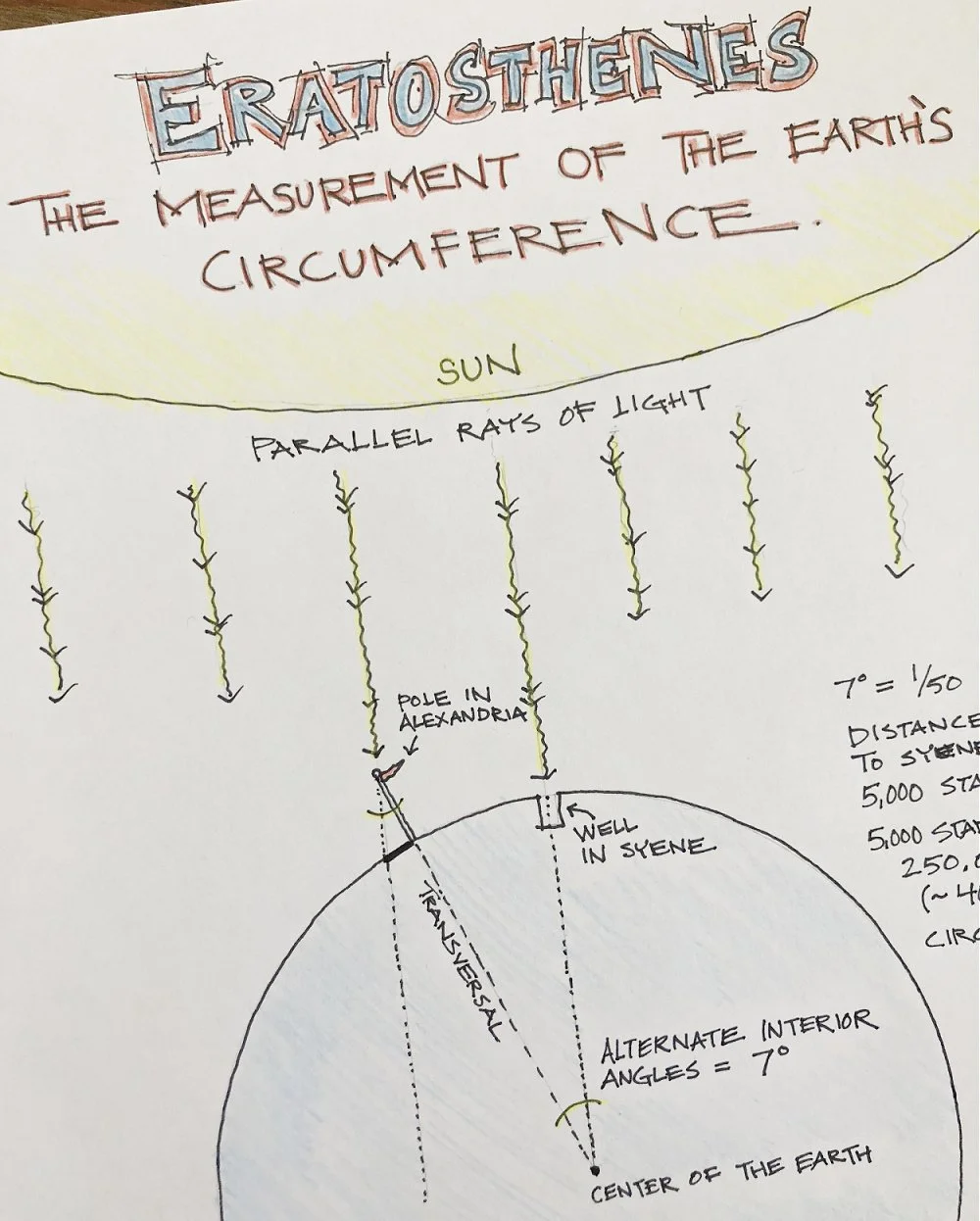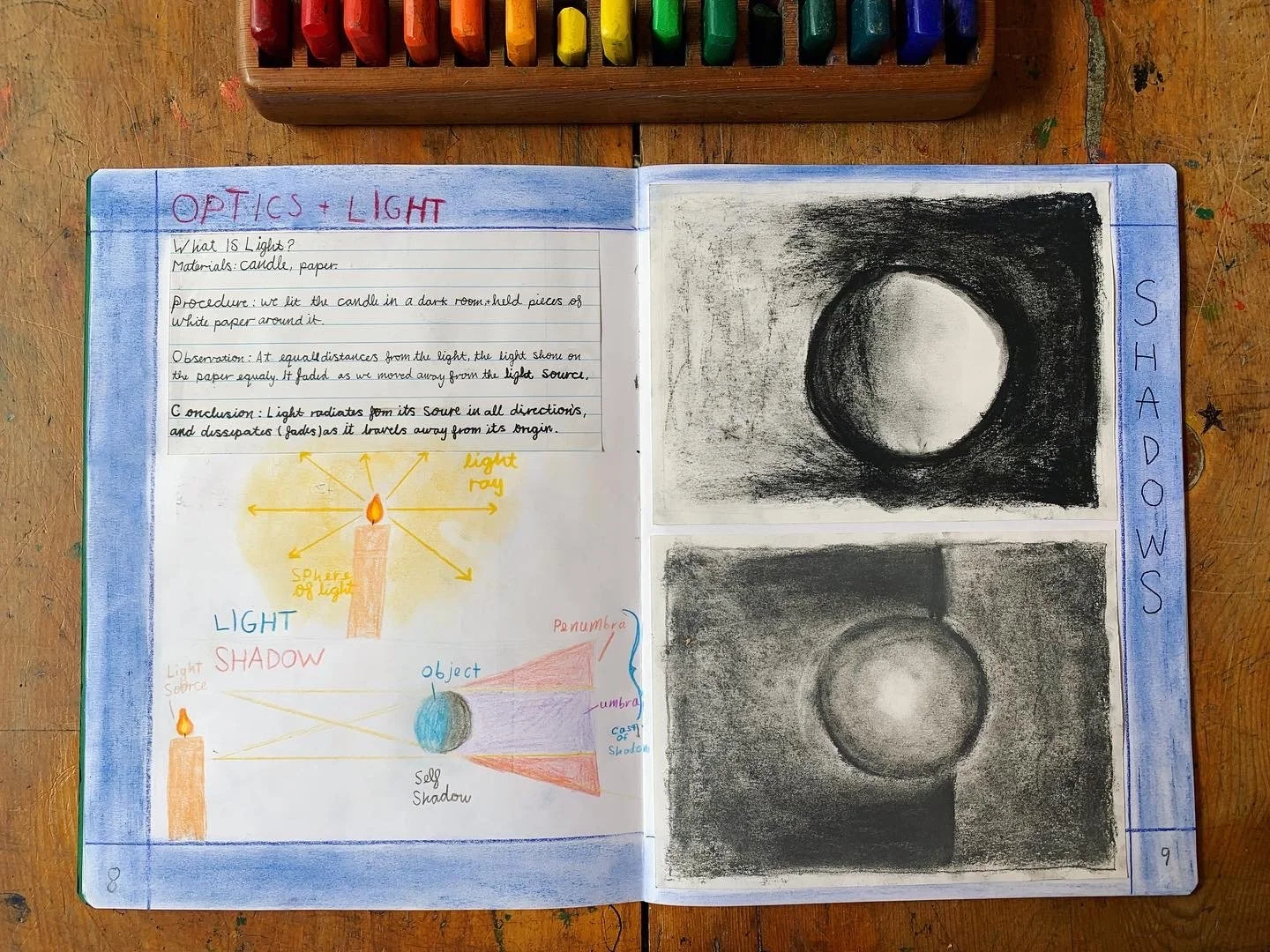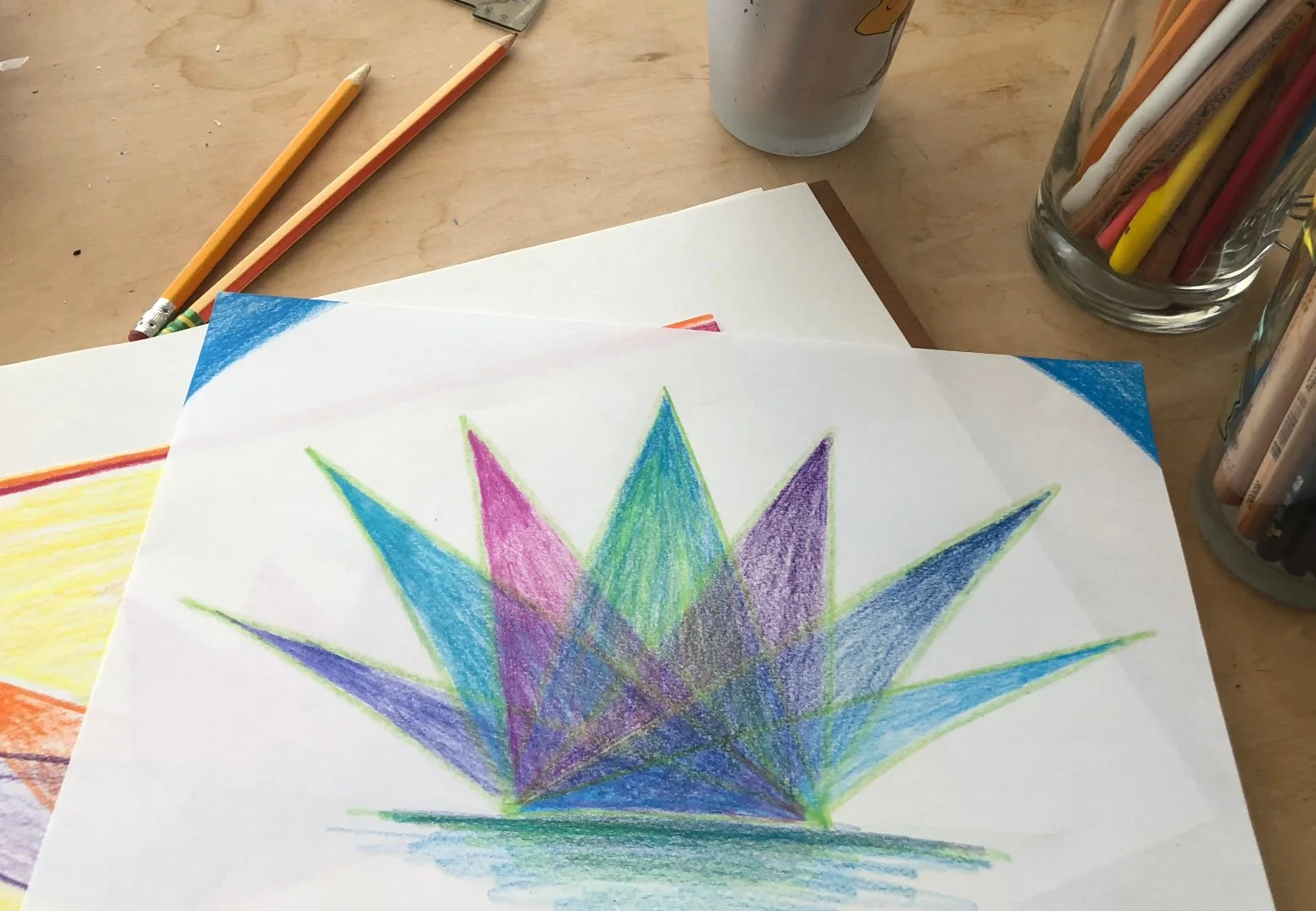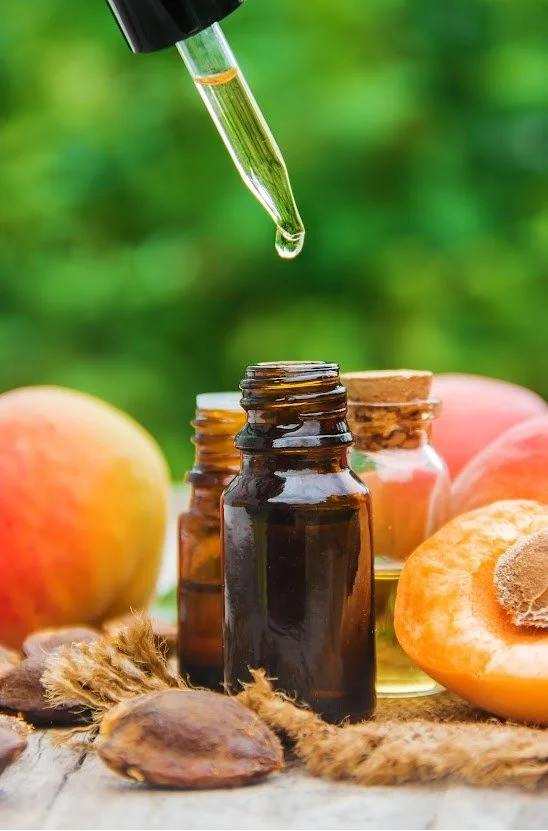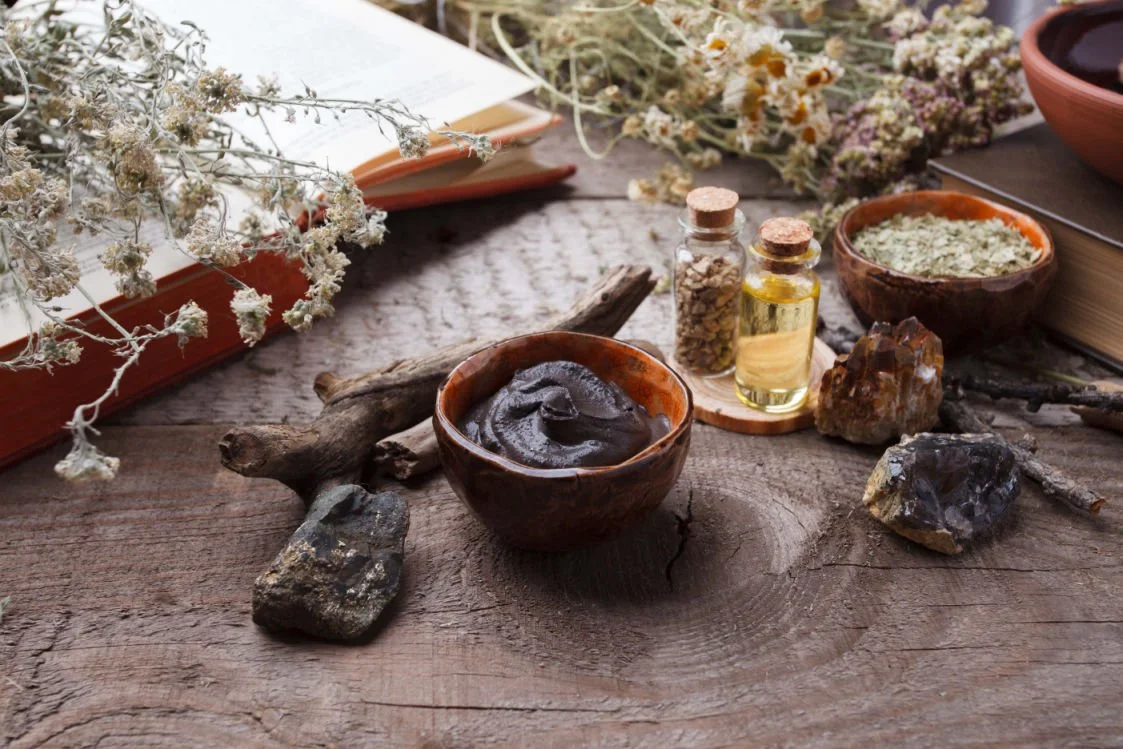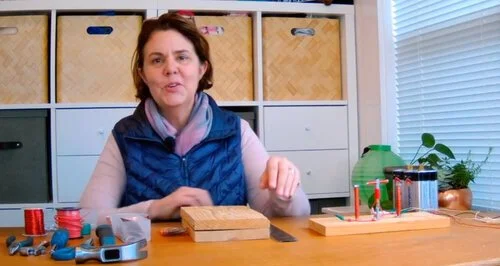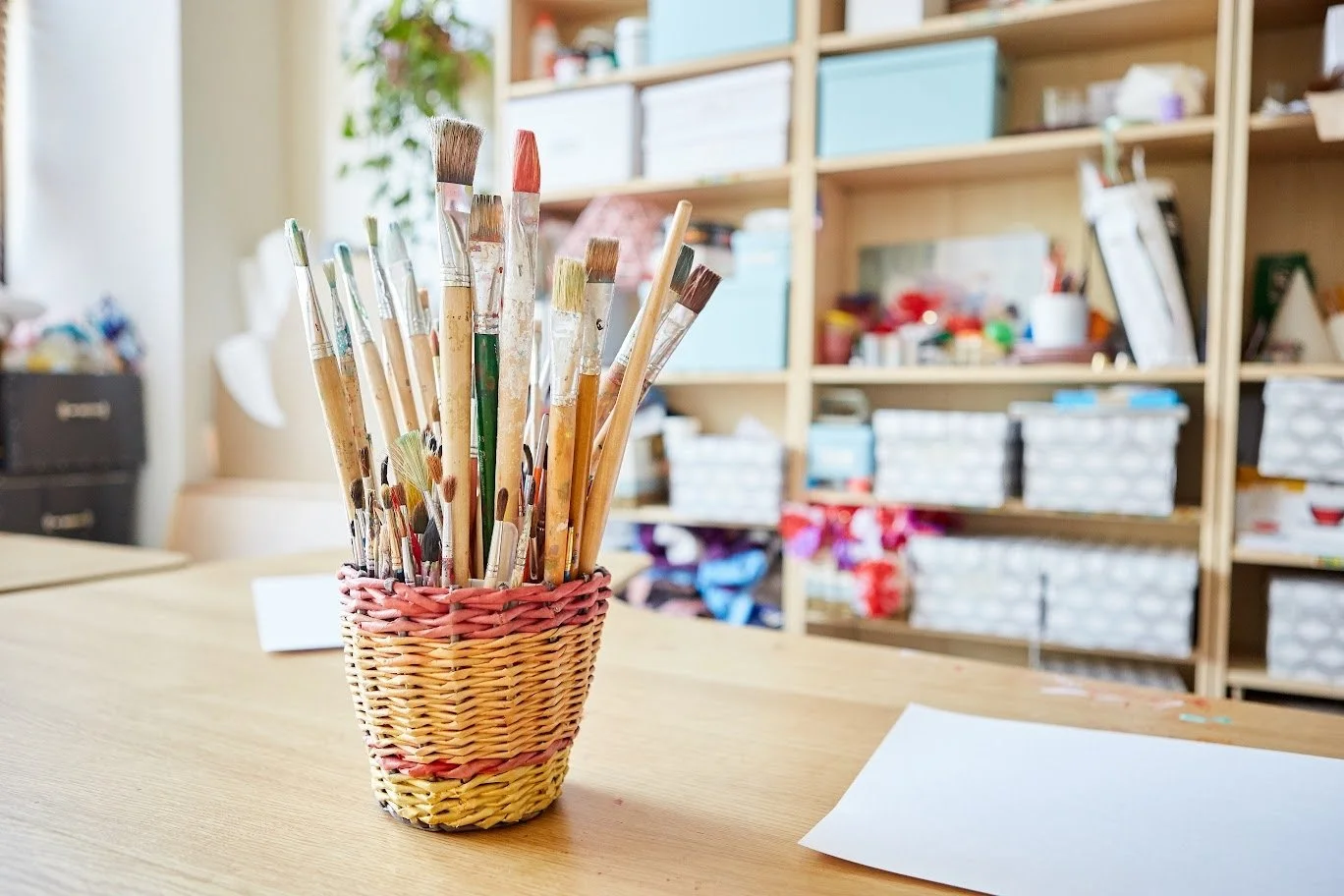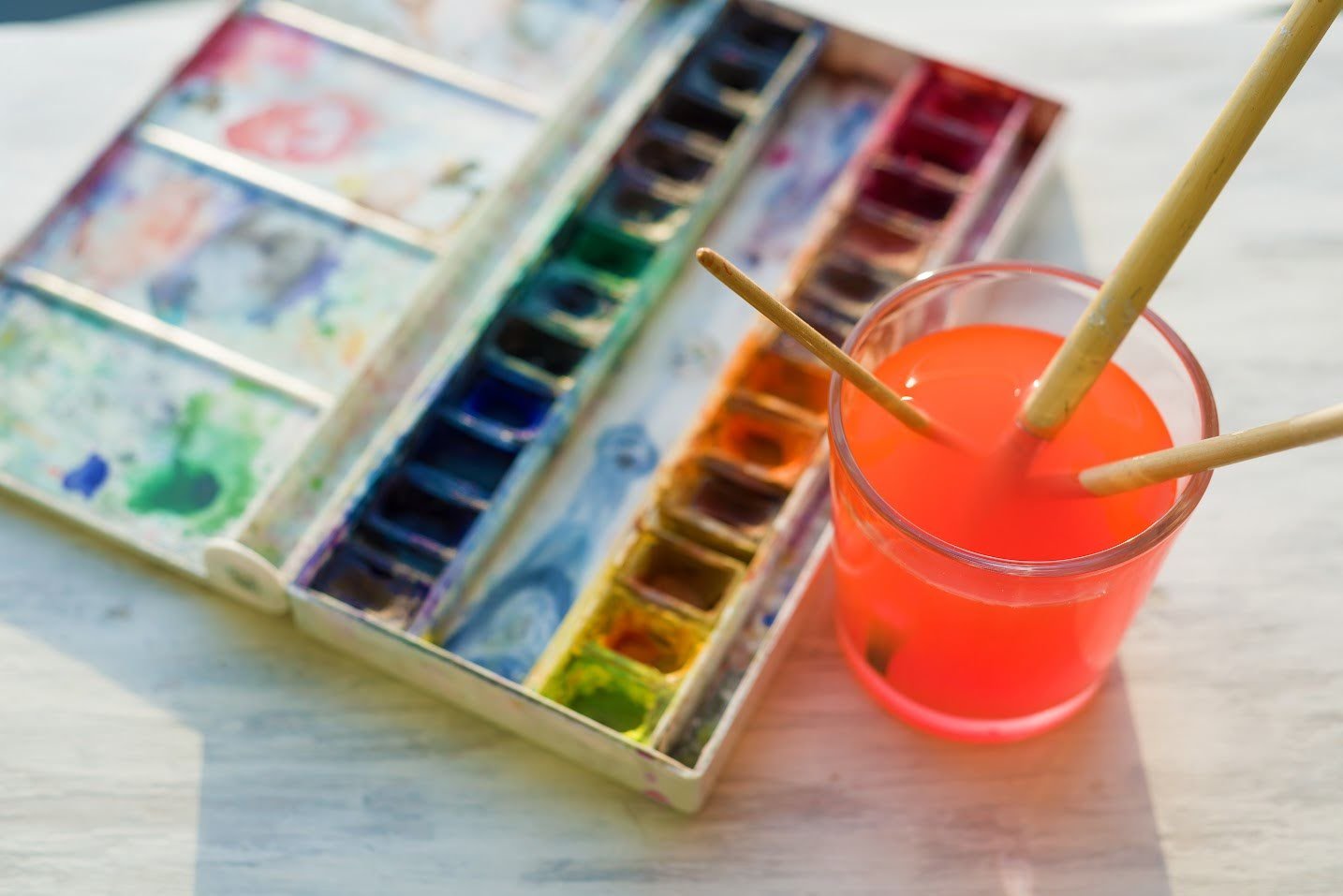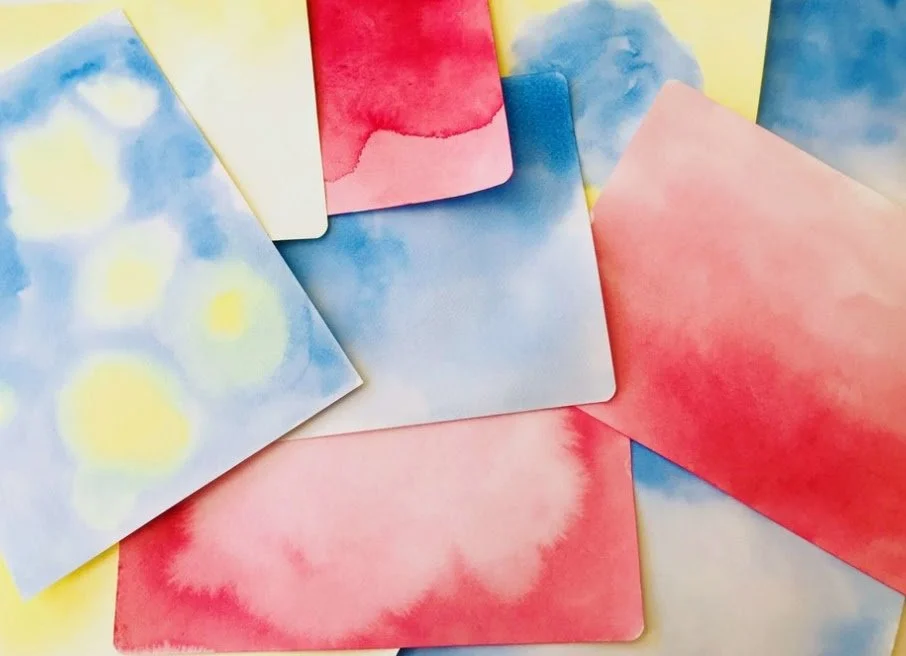
Waldorfish Blog
Our Best Waldorf Homeschool Planning Resources
As the school year rolls along, you may be finding your groove in some areas, identifying challenges in others, and looking to solidify plans for the months to come.
We’re here to help.
We’ve collected many of our planning resources here in one spot - our goal is for you to feel empowered to work through your school year in the way that serves your family best!
When planning your homeschool year, it can be difficult not to get sucked into FOMO, comparison (especially if you go on social media, *ahem*,) or just not knowing where to start.
Here’s something to remember:
FREEDOM is the cornerstone of Waldorf education!
Now, we know that freedom can feel a little intimidating- sometimes too many options actually breeds indecision. But take a breath, explore, and trust your gut. You know your child(ren) best; their interests, challenges, needs, and wishes. Really, you do! So take some time, and enjoy the planning process. You’ve got this.
Click on the link or image to explore some resources that we hope inspire, empower, and give you confidence to do things your way:
Doing It Your Way: Celebrating Michaelmas
Michaelmas is just around the corner, and there are many things we see out there that feel like requirements to celebrate the day. Building a dragon, sewing golden capes, dragon bread? All or none of the above? Where to begin? Start here, and get some encouragement for doing it your way!
Four Things to Know Before Planning
Just getting started with homeschooling AND Waldorf education? Here’s four things to know as you get started with your planning. This piece is less of a “things to do” list, and more of a “things to bring you peace” list.
Four Questions We Should All Be Asking On Behalf of our Children
Crafting the rhythm of our children's days and school year can start to feel daunting when we consider all the various options available to our families. Take time to read this piece that includes four very important questions we should all be asking on behalf of our children. Their answers will bring you peace. Promise.
4 Tips for Planning Your Curriculum
Taking care of yourself as an educator is just as important as taking care of your child’s day and education! Empower yourself to prepare curriculum and lessons in ways that work for you! Find some inspiration here for ideas on making the most of your time, and explore ways to work smarter, not harder.
Get the Biggest Bang for Your Homeschool Dollars
Have you purchased homeschool curriculum or Waldorfish.com courses? Not sure exactly how to make the most of them? We’ve compiled the most doable and meaningful advice from our customers to get everything you possibly can out of your homeschooling dollars.
Getting Your Supplies in Order
This next resource brings the phrase “the devil is in the details” to mind. Be sure to read this piece to discover the importance of taking some time to plan ahead and get all the things you need on hand in order.
Allowing Your Children to Write Their Own Stories
It feels like we run into “shoulds” around every corner when educating our children. It’s not hard to get overwhelmed with tracking our childrens’ progress based on rubrics and a grade’s expectations. These have value AND we want to empower you to not worry too much. A little flexibility, time, and faith in your child’s growth and development goes a long way in making your homeschool year meaningful and educational.
Especially in the younger grades, Waldorf education puts a lot of emphasis on the importance of including stories with lessons, such as in form drawing. But do we have to include a story every time? Is there another way? Explore this piece about stories by our form drawing course creator Rev Bowen, and find out where more isn’t necessarily more.
Storytelling is a pillar of Waldorf education, but it can be one of those things that feels daunting, especially to those that are just getting started. But, storytelling is about so much more than memorizing and reciting- it’s about connection, sharing, and enlivening even the most simple stories. Be sure to check out our full, 3-part storytelling series by Sara Renee Logan, and discover that in fact, you already are a storyteller!
About the Authors
Robyn Beaufoy is Waldorfish’s CEO, and a course instructor for two of our courses - Waldorf Art for Beginners and Weekly Art Foundations. You’ll find her intuitive touches and influences throughout everything Waldorfish offers! Robyn has been in the world of education for almost 30 years, with an MA in Education and a certification in Waldorf teaching - she also homeschooled both of her children. In 2012 Robyn co-founded Waldorfish.com, creating it with the vision of making Waldorf inspired-art and pedagogy more accessible, joyful, and doable to homeschoolers all over the world.
Caitlin Amajor is Waldorfish’s course instructor for Geometry grades 5 & 6, and Botany, as well as our Administrative Assistant. From a young age, Caitlin has been immersed in Waldorf education, attending a Waldorf school from K-8. After receiving a BA in History, Caitlin gained her certification in Waldorf teaching, and spent seven years as a Waldorf class teacher in the upper grades. With a special fondness for watercolor painting and geometry, Caitlin loves bringing Waldorf education to her students all over the world, and seeing their own individuality and style bloom from the curriculum!
More from Waldorfish:
Waldorf Grade Three Painting: Growing in Color
In Waldorf education, the third grade curriculum includes studying agriculture, shelters around the world, ancient creation stories, and more.
Third grade painting curriculum includes form, color, and beauty!
Through explorations of agriculture and house-building, the children are literally brought down to earth as they carry out practical farming and building activities. In painting lessons, we begin to see more forms and detail than ever before: wheat stalks, log cabins, or a knight overcoming a dragon. Why this shift towards detail and realism in the painting curriculum? Because as educators, it is our task to support the third grade child as they orient themselves in the world.
In the lower grades and in early childhood, children have a deep connection and relationship to the world and people around them. But as they grow into third grade, their independence and individualism begins to bud. Children begin to feel more separate from their friends and family (an appropriate shift at this stage!), they begin to notice some of the challenges and injustices in the world around them, and overall, the world is suddenly new and a bit unfamiliar.
Stories come to life through the watercolor curriculum.
As we can imagine (or maybe even remember) this is not an easy place for a child to be in their development.
It can feel uncomfortable, exciting, or uncertain. As educators, our task is to strive to communicate this overall theme: human beings have lived, thrived, and overcome. Humans have figured out how to make homes and live in community, wherever they may be, with whatever resources they may have. Even through the greatest of challenges and obstacles, humans find a way to persevere.
In Waldorf education, the painting curriculum is designed to meet the growing child right where they are.
The activity of painting mirrors what the children are also exploring in other parts of the curriculum: how human beings live in the world in all different places, circumstances, and challenges.
The third grade shelter curriculum melds perfectly into watercolor painting class.
Painting shelters is not simply painting a structure, but includes observing and appreciating the beauty of the surrounding natural landscape. A log cabin comes to life on the page through the shady forest; an adobe home emerges from the warm and arid desert landscape; snow houses appear through an icy blue snowstorm.
To deepen their studies of farming, the children paint wheat stalks ready for milling, apples ready for picking, and carrots pulled from the carefully tilled earth.
After immersing themselves in ancient creation stories, the children’s paintings of rainbows are not just a combination of colors, but the representation of humanity surviving a storm, and their celebration of all the beauty and potential the world has to offer.
Third grade is a new kind of school year for the child: the world is something new and unfamiliar, and through the painting curriculum, the educator can support their journey in bringing the beauty of the earth, its resources, and the resilience of the human spirit to life!
About the Author
Amanda Ziadeh Mercer is a dynamic Waldorf Teacher! She has had the pleasure of working with children in varying stages of development, ranging from infants in Parent-Child programs to the more mature students of the eighth grade. This wide range of experiences has gifted her a full picture of the developmental stages of childhood.
MORE FROM WALDORFISH CONTRIBUTORS AND TEACHERS:
Waldorf 8th Grade Organic Chemistry: In the Kitchen!
A frequent favorite in the eighth grade Waldorf curriculum is the study of organic chemistry (aka biochemistry) - really, it’s true!
Working with essential oils is a wonderful addition to the 8th grade chemistry block!
It’s a fun block for the teacher as it’s very hands-on, and preparation often involves a quick trip to the grocery store. Students enjoy their biochem studies because they get to experience chemistry in a way that feels fun and not too serious, but also pushes them to grow in their observational and abstract thinking skills (more on that here!).
As with everything in Waldorf education, we’re taking a step further in our investigation of the natural world.
In seventh grade chemistry, the focus was on inorganic chemistry, which means studying substances that do not contain carbon (with some exceptions!)
In eighth grade, the focus is on the chemistry that arises through living processes. For instance, what is the chemical process of digestion? How does a human body absorb nutrients? How do fats, proteins and carbohydrates act individually or together? Where in our natural world do these different macronutrients exist (such as starch in potatoes, fats in dairy products, protein in eggs) and what can we do with them?
Hence, in eighth grade the study is truly biochemistry- the chemistry of life!
The curriculum is rich with hands-on experiments - this includes cooking and many other activities that involve consumable products. If you were to pop in on an eighth grade chemistry main lesson, you’d find the students observing various kinds of sugars (using taste, touch, smell, and all the senses!), making their own lotion or lip balm (experimenting with different fats and oils), or stirring up mayonnaise (an investigation into emulsifying!)
In 8th grade chemistry, the students learn through cooking!
This block is an excellent bridge from the literal into the abstract, meeting the developing eighth graders right where they are.
If you’ve ever met an eighth grader, you may have noticed they are absorbed in the physical world, and are experiencing significant changes in their own bodies. There is no better time than now to weave the curriculum into their current state of being! Focusing on what we put in and on our bodies, from food to skin care, heightens the eighth graders' sense of inquisitiveness, and encourages them to explore chemistry in a way that truly resonates.
An eighth grader is just on the precipice of a wide new world and all that comes with going to high school, but they aren’t ready to move on just yet. They have begun to think more abstractly, but are still learning to hone their observational skills on what is placed in front of them. As well, Waldorf curriculum plants seeds along the way as the grades progress, and in eighth grade, those seeds begin to sprout and bloom.
For example, cooking is a curricular staple in the third grade curriculum, and here in eighth grade, cooking is perceived through a fresh lens that comes with the study of biochemistry.
This chemistry block is designed to bridge the gap between the abstract and concrete.
Ready to cook with your eighth grader?
We’ve got a gift for you!
Click below to enjoy a recipe written by our Waldorfish Chemistry teacher, Ari Magruder. Incorporate a fun recipe into your curriculum that’s perfect for the upcoming fall season. Enjoy!
About the Author
Ari Magruder is currently the middle school science and math teacher at Sacramento Waldorf School. She also contributed to the teacher education and summer Art of Teaching programs at Rudolf Steiner College for many years.
More from the blog:
Waldorf Art at Home: Getting Your Supplies in Order
Creating a positive environment for your at-home art class requires a little bit of thought, planning, and intention.
A starting point? Give yourself a solid foundation.
This might look like finding a comfortable and large enough workspace, finding the right time of day that works best for your children and schedule…etc.
Here’s another one: getting your supplies in order!
Taking a little time to prepare your art supplies will make a big, positive impact!
Making art classes successful requires some prep, and in a way, the set-up, materials, and clean-up matter more than the lesson itself. If all of these things are handled, then you (and the students!) can focus, and truly enjoy and learn from the lesson at hand.
Looking at supply lists (especially for Waldorf art) can make your head spin a bit; it can feel like a lot of stuff, and expensive stuff at that.
How can you be sure you’ll actually use what you buy? Are there other alternative brands that will give you the same result? How do you store everything to keep it in good shape for the next class?
These questions are why we created our Waldorf Art for Beginners course!
In it, we give you the full walk-through of supplies you’ll need for Waldorf art. The kind of supplies you’ll actually want to use, and which brands provide quality in terms of experience and result. We share what we’ve learned from our many, many years of experience both in the classroom as well as homeschooling plus lessons learned from a lot of trial and error!
At this point, you may be asking yourself, “Does the specific kind of art supply really matter? Aren’t they all basically the same?”
We’re here to tell you that they definitely are NOT, and often, spending a bit more at the beginning will save you frustration and needing to spend more down the road.
Art class should feel enjoyable, fun, and like your time was used wisely to create and grow. We highly recommend controlling the variables that you can, and having the best supplies at hand will give you the best odds of results your artists are happy with.
A prepared, organized workspace leaves room for a peaceful, creative art class.
For example, let’s talk about painting paper, an item that seems fairly inconsequential in the grand scheme of painting, but actually really matters a LOT.
For watercolor painting, the paper needs to be thick enough to withstand the water, the friction of the brush, and the layers of paint. With that in place, the child can paint to their heart’s content without noticing the paper. Instead they’re noticing the experience, the color, and forming those skills and connections we strive for as educators!
But, without the right kind of paper, the lesson and experience becomes secondary. Too-thin paper will pill, rip easily, and not hold the pigment in a strong way. It is very frustrating for the child, as they aren’t able to create freely.
All this is to say: get the best supplies you can.
Not necessarily the most expensive, not the most “Waldorf”, but the items that will make the lesson, creativity, and experience central to the art class. You won’t regret it, we promise!
Our Waldorf Art for Beginners course is open for enrollment year-round, and provides a full, comprehensive walk-through of all things Waldorf art supplies: crayons, watercolor paints (and paper!), colored pencil, and more. PLUS instructor support, links to our favorite vendors, and forever access if ever you need to reference the course again for helpful reminders.
About the Authors
Robyn Beaufoy is Waldorfish’s CEO, and a course instructor for Waldorf Art for Beginners, Weekly Art Foundations, and Simple Season. You’ll find her intuitive touches and influences throughout everything Waldorfish offers! Robyn has been in the world of education for over 25 years, with an MA in Education and a certification in Waldorf teaching - she also homeschooled both of her children. In 2012 Robyn co-founded Waldorfish.com, creating it with the vision of making Waldorf inspired-art and pedagogy more accessible, joyful, and doable to homeschoolers all over the world.
Caitlin Amajor is Waldorfish’s course instructor for Geometry grades 5 & 6, and Botany, as well as our Administrative Assistant. From a young age, Caitlin has been immersed in Waldorf education, attending a Waldorf school from K-8. After receiving a BA in History, Caitlin gained her certification in Waldorf teaching, and spent seven years as a Waldorf class teacher in the upper grades. With a special fondness for watercolor painting and geometry, Caitlin loves bringing Waldorf education to her students all over the world, and seeing their own individuality and style bloom from the curriculum!
Looking for something?
Welcome to Waldorfish! We started this adventure in 2012 out of a desire to make Waldorf training more accessible to class teachers in remote locations and to homeschooling families everywhere! Read more, click here.
WE WON! Our Weekly Art courses were voted “best interactive art program.” Learn more about the award, here.
A few of our most popular blog posts:


